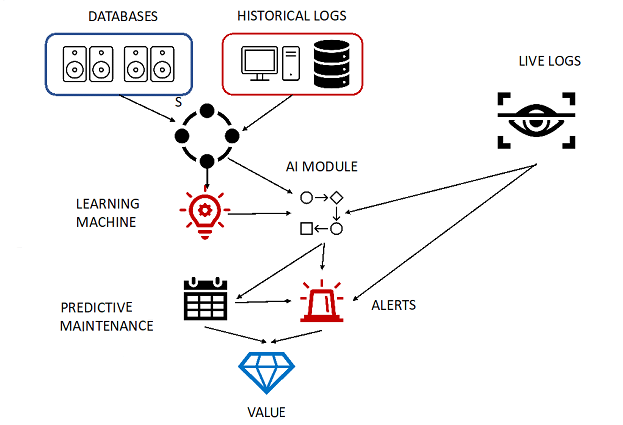BRIEF
Today, the concept Industry 4.0 is the focus of her attention managers. Other companies are facing the new reality opened by Artificial Intelligence to be managed. In this context, the benefits of forward-looking management with the predictive maintenance component that allows rationally to determine the condition in which an equipment is located and to anticipate when activities can be carried out, is a major strategic component of. In this area, machine learning and AI-based implementations lead to significant financial savings and optimize the functioning of systems and equipment.
In the world where digitization is the fundamental element of economic and human development, data centers play a central role in this chemistry. In this reality, it’s the component cypresses have to optimize their performance; and that at a predictable cost. At this time, any malfunction of the systems and services offered by data centers can be very costly for customers who provide services to end users. In order to solve this challenge, the project proposes the creation of the platform to ensure the managerial migration from the reactive approach to a proactive approach based on data and processes in the field of asset maintenance in data centers. The set of algorithms and processes that will be used in machine learning logic and artificial intelligence module design for a smart alert system, will create the context of high-performance forward-looking management. This will generate forward-looking programs and work agendas for maintenance services that will not interrupt basic processes.
The platform will provide the two basic services for data centers: predictive maintenance and intelligent monitoring. These two basic services will be provided by a system of current technological components: data learning and artificial intelligence (process driven), Internet of Things (IoT), and advanced coats of arms of operational analysis.
The benefits proposed by the solution platform for forward-looking data center asset management are as follows:
• Improving the customer experience
• Increasing the quality of services
• Improving your team experience
• Decrease in service costs
• Ensuring the best conditions for business continuity (zero unplanned stops)
To achieve these objectives a set of challenges related to research, an analysis and execution are necessary. These are:
• How to integrate different data sources and automate storage and cleaning processes.
• How predictive models will be designed for performance functionality and degradation issues for each equipment.
• How to automatically recommend the most appropriate services in a probabilistic information set on possible problems.
• How to use the answers and results to the first 3 topics for:
-Making a maintenance plan
-Optimization of spare parts management
-Optimizing the management of corrective software components.
CHALLANGES:
The current way of solving problems given by malfunctions in data centers is based on the operator’s ability to capture data on problems, their transformation into information and decisions and reactive intervention in order to re-commission. Costs (objective and subjective) increase exponentially depending on the response time of the operator (and the complexity of the intervention).
Classic systems based solely on operating hours are unsuitable for the complexity of the equipment and the context in which they operate. These maintenance systems produce high costs and uncontrollable stop times. Solution proposes a proactive intervention aimed at avoiding the problem. This is done by remote monitoring and fault predictions. Real-time history data, brand features and intelligent monitoring data can show deviations that can create alerts managed by the artificial intelligence module based on processes and automations.
SOLUTIONS:
• The approach. There are some key elements on which the design of monitoring modules, machine learning and artificial intelligence depends:
- Elements for the collection of historical data
- Definition of functional and context deviations.
- Elements of analysis and automatic interpretation of deviations
- Planning and alerting via AI
- The team that will design the modules and case management
- Key issues for assessing success.
- Simplicity of design
- Stability of component module officials
- Quality of monitoring and historical data
- Construction of monitoring capabilities for equipment
- Trust and accuracy for data.
- Value Creation Logic. Value creation is done in the solution through a rational system of alerts and a dynamic module for forward-looking maintenance. This interaction with the intervention team is built by processing data through machine learning and the architecture of processes and rules generated by events through the AI module.
The logic is shown in the figure below.

Return of investment items may vary on a case-by-case basis; however, the following elements will be important in the return analysis. The figures are based on current industry averages (data center).
IMPACT
| INDICATOR | MEDIA ON INDUSTRY | INDICATOR AFTER IMPLEMENTATION |
|---|---|---|
| Customer satisfaction | 60% | 90% |
| New customers | 20% | 25% |
| Churn rates (customer loss rate) | 15% | 5% |
 90%
90%